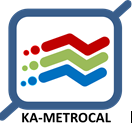
-
StatusOngoing
-
Status date2016-08-08
KA-METROCAL aims to design, manufacture and test a high precision (+/- 0.5 dB uncertainty) metrology and calibration system breadboard and application software for Ka Band able to perform fast, accurate and inexpensive Rx Carrier Power measurements for different satellite services in Ka-Band.
The proposed system applies proven calibration concepts that rely on the use of a broadband white noise source to characterize a receiver chain gain or attenuation.
Under the overarching objective of implementing a calibration system for Ka-band satellite carriers, the project targets the following specific improvements:
- Accuracy improvement with minimum hardware size, assembly and costs.
- HW and SW integration to eliminate costly instrumentation.
- Minimum service interruption during calibration. Maximum in the order of 1-5 seconds.
Ka-band satellite communication poses new challenges on RF path calibration systems at gateway stations.
On one side, Ka band operational frequencies (20GHz/30GHz downlink/uplink) almost double those of Ku band. At these higher frequencies, higher-cost instrumentation is also required, having a notable impact on overall price.
On the other side, Ka band satellite transponder bandwidth significantly increases, with typical values of 125MHz or 250 MHz thus broadening the spectrum span to monitor compared to Ku band. Achieving the required precision in such a large bandwidth will most likely increment the processing time making it difficult to accommodate both accuracy and time requirements.
In the ground-segment, calibrating the path from an earth station receiving antenna to the measurement equipment used in the associated Carrier Monitoring System has traditionally been done using expensive instrumentation such as microwave signal generators/synthesizers (pilot tone injection systems), power meters and bolometers. Although this is nowadays the dominating approach, the need for certain high-frequency measurement devices makes it significantly expensive; Furthermore, the use of narrow band signals for RF path calibration purposes in the new Ka bands makes the whole process extremely slow and prone to inaccuracies.
Compared with this approach, Ka-METROCAL offers:
- Significant cost reduction for key components (up to 90%), avoiding the need for expensive instrumentation.
- More precise calibration results (uncertainty within +/-0.5dB).
- Faster operation (two orders of magnitude with typical Ka-band 100MHz carriers). Operational costs derived from service interruptions due to calibration are thus considerably reduced.
- Calibrate when needed, just in time. Sort out effects of temperature fluctuations running calibration routines twice a day (e.g. at noon and at dawn) to increase overall measurement precision.
- Straightforward integration of calibration results with the Carrier Monitoring System.
The proposed RF path calibration system is based on the use of a calibrated noise source, which provides an accurate power reference over a broad band with a spectral flatness that far exceeds typical spectrum analysers response. This approach speeds up significantly the calibration process reducing also the hardware investment as only a noise source is required. Measurement uncertainty is also reduced since the broadband noise source is sufficiently small to permit its attachment at the very output of the antenna, thus eliminating the cable required in the traditional approach to inject the signal from the synthesizer placed at a given distance from the antenna feed.
The automation of the complete RF path calibration process, obtained by integrating appropriate COTS hardware and software modules, enables outperforming calibration speed for a broad frequency range in the context of a satellite system ground station.
With the introduction of this new method, measurements are obtained at once for the complete band of interest instead of repeating the calibration measurements and calculations at different specific frequencies. As a result, the operational costs derived from service interruptions due to calibration are dramatically reduced and the measurement precision is increased.
SYSTEM ARCHITECTURE
KA-METROCAL integrates RF measurement and control instrumentation, microwave HW, and computation and orchestration SW into a single calibration solution, additionally facilitating the straightforward coordination and exchange of calibration data with accompanying satellite carrier monitoring systems.
High level SW modules are deployed at the NOC while low level control drivers and measurement instrumentation are hosted at the antenna shelter, and calibration HW is installed at the outdoor system, close to the antenna feeder.

The calibration HW integrates a broadband noise source, connected to the antenna orthomode by means of a waveguide switch. The noise source output signals (ON and OFF) are measured at the spectrum analyser input and compared against the precise noise source power specifications, obtaining the desired path gain.
The project technical activities start with a Ka band calibration requirements analysis and software and hardware design phase. Implementation activities include setting up the Ka band receiving and transmitting stations and developing the calibration software platform. A final stage in last 2 months is planned for verification and validation of the calibration solution.
The Ka band hardware acquisition process is now almost complete and prepared for the Ka band Rx station integration which is the next step.
A refinement of the original hardware architecture for the calibration unit was performed based on ideas arising from the uncertainty analysis.
Preliminary tests to verify the behaviour of certain components (LNB, noise source, etc.) in the actual set up are about to start.



